Temple Hopping in Tokyo Posted by sasha on Jul 25, 2012 in Culture
Arriving in the city proper, our first order of business was figuring out how to navigate the incredibly complex Tokyo subway system. First of all, there are different companies operating lines – the Tokyo Metro (東京メトロ) and the Toei (都営). The good news is you can get anywhere you want in the city; the bad news is it might take you a while to figure out the map, which looks like an incoherent jumble of multi-colored lines. On the plus side, there are storage lockers in most big stations, so if you’re just stopping in the city for a few hours and don’t want to haul your luggage around or waste money on a hotel, you’re free to leave your bags and explore. We did just that, as we headed out to take in some of Tokyo’s most famous temples.
First up we headed to Asakusa (浅草) to visit Tokyo’s oldest and most renowned temple – Sensō-ji (浅草寺). This Buddhist temple, dedicated to the Goddess of Mercy, was constructed way back in 628. As the story goes, two local fishermen found a statue of the Goddess floating in the Sumida River. Their village chief took this as a sign from the great beyond, and he converted his home into a temple to honor her. Unfortunately, it was mostly destroyed during World War II. The temple, along with much of Japan, had to be rebuilt in the years following the war.
At the entrance to the main temple is the Kaminarimon (雷門), or “Thunder Gate.” This gate is a symbol of the Asakusa area and of Tokyo in general. Inside, visitors will find a stunning five-story pagoda and the main hall, which is dedicated to Kannon Bosatsu (観音菩薩), also known as the Bodhisattva Guanyin, or as I mentioned, the Goddess of Mercy. With beautiful murals adorning the ceilings and an elaborate shrine, it really is a sight to behold. In front of the shrine, visitors bow and offer up a prayer. You’ll also see people taking a drink from a sacred water fountain, or pulling a random fortune out of one of the many wooden boxes (for a small fee of 100 yen).
As tourists visit this temple all year round, you can find plenty of shops in the surrounding area. A stroll down Nakamise-dōri (仲見世通り) will take you past an abundance of shops selling a variety of souvenirs. Anything from kimonos, to Godzilla toys, to Buddhist scrolls can be found here. Even if shopping isn’t your thing (and believe me, it isn’t mine), it’s worth it to take a quick jaunt down here, if only for the people watching. You’ll also find some quaint little restaurants tucked away, where you can rest your feet and enjoy a hot bowl of ramen or a cup of tea.
Next up we headed to Harajuku (原宿), where we paid a visit to the Meiji Shrine (明治神宮). Founded in 1920, this Shinto shrine is dedicated to the Emperor Meiji (明治天皇) and Empress Shōken (昭憲皇后). The 122nd Emperor of Japan, Meiji was also known as “Meiji the Great” (明治大帝). This is fitting, considering that he saw and helped to aid the transition in Japan from a feudal shogunate to a great world power, through political, social, and industrial changes. After his death in 1912, it was decided that a shrine would be built in his honor. The shrine itself is completely surrounded by a massive evergreen forest, making this area a popular respite from the unbearable heat and overwhelming crowds of the concrete jungle just a few minutes away.
Walking through the main torii (鳥居 – gate) represents a transition from the profane (aka the normal society on the outside) to the sacred. We strolled along the peaceful gravel path, enjoying the shade and the cool temperature. Along the way, we stopped to admire a collection of sake (日本酒) caskets, which were donated by various brewers over the years. In between the main gate and the shrine, there are a few other places to stop, such as the treasure museum and a picture gallery. As we were strapped for time, however, we headed directly to the main shrine. Just outside of the shrine is a sacred water fountain, and we did our best to imitate the locals performing the cleansing ritual that should be done before entering. Once inside, we enjoyed the peace and tranquility of the shrine – a stark contrast to the bustling roads and skyscrapers just around the corner.
Speaking of skyscrapers, our next stop was Shinjuku (新宿区), where we headed to the Tokyo Metropolitan Government Building (東京都庁舎). If you’re looking for a great view of the city, this is the place to go. For starters, it’s free, which beats the more touristy and much more expensive Tokyo Tower. It’s also open until 11 PM on weekdays, making it the perfect place to visit in the evening after a busy day of sightseeing.
From the observation deck on the 45th floor, we watched as the sun went down and the neon came up all across the sprawling metropolis that is Tokyo. There’s even a small cafe, so you can kick back with a cup of coffee, a beer, or whatever you fancy and take in the sights around you.
After such a busy day, we wandered through the streets of Shinjuku for a little while, stopping for drinks and a bit of window shopping. As we had to catch the subway to our couchsurfing host’s abode before it closed, we joined the masses in sprinting around the subway station, desperately trying to make our connection before we got stuck dealing with language barriers and expensive taxis. Thanks to the assistance of an overly friendly and helpful elderly Japanese man, we made it just in the nick of time. Our wonderful host, Yugi, took us out to a tiny local restaurant, where we were treated to fresh sashimi, vegetable tempura, and of course miso soup. With big plans for the following day, we packed it in for the night and got some z’s on a traditional Japanese tatami mat.

Build vocabulary, practice pronunciation, and more with Transparent Language Online. Available anytime, anywhere, on any device.




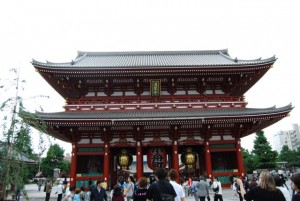
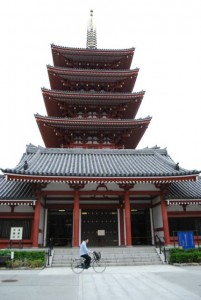
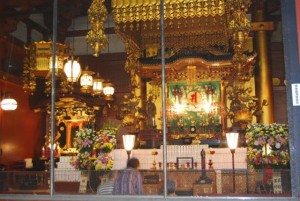
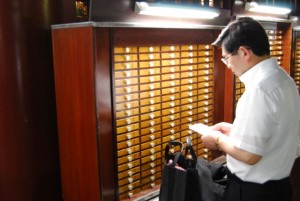
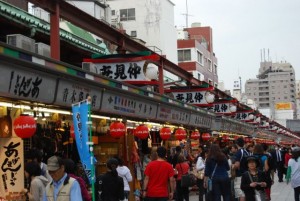
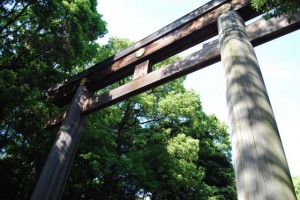
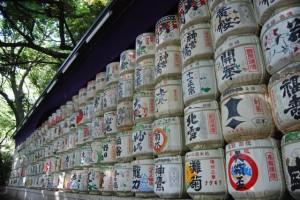
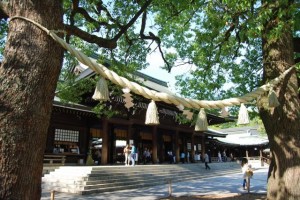
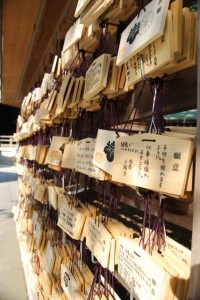
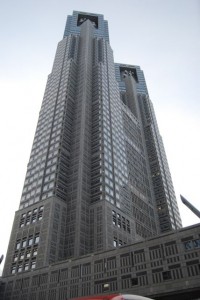
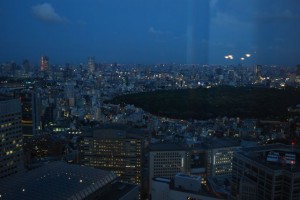

Comments:
Tim Upham:
Norito or Shinto prayers to the kami or deities. My favorite kami is Tsukuyomi or moon deity. I went to a Japanese garden one time for a Moon Viewing Ceremony or Otsukimi. There we had saki and mochi or rice cakes. I wrote out a norito for Tsukuyomi, but mentioned the moon deity as a kamuy — the Ainu word for deity. In the same norito, I mentioned the importance of the iomante or Ainu bear ceremony. Because that is what Japan is all about.